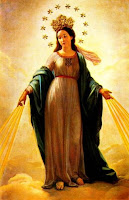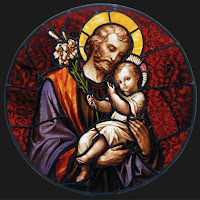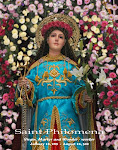
A good friend gifted me a copy of "The Mysteries of Christianity" written by Fr. Matthias Joseph Scheeben, SJ (1835-1888). The first pages were filled with points worth considering. I believe that the loss of the sense of the sacred is likewise the loss of the mystery of Christianity:
"Christianity entered the world as a religion replete with mysteries. It was proclaimed as the mystery of Christ (Rom. 16:25-27; Col. 1:25-27), as "the mystery of the kingdom of God" (Mark 4:11; Luke 8:10). Its ideas and doctrines were unknown, unprecedented; and they were to remain inscrutable and unfathomable.
The mysterious character of Christianity, which was sufficiently intelligible in its simplest fundamentals, was foolishness to the Gentiles and a stumbling block to the Jews, and since Christianity in the course of time never relinquished and could never relinquish this character of mystery without belying his nature, it remained forever a foolishness, astumbling block to all those who, like the Gentiles, looked upon it with unconsecrated eyes or, like the Jews, encountered it with uncircumcised hearts. With bitter scorn they would ever scoff at its mysterious nature as obscurantism, superstition, fanaticism, and absurdity.
After the mystery of Christianity has...succeeded in making its way and became firmly entrenched in the belief of the nations, it found other and less malevolent adversaries...They sought to snatch the veil from the sanctuary of Christianity, to cleave the mystery so as to liberate the kernel of truth from the dark prison of its shell and bring it to light.
Even friends and zealous defenders of Christianity could not always suppress a certain dread when they stood in the obscurity of its mysteries. To buttress belief in Christian truth and to defend it, they desired to resolve it into a rational science, to demonstrate articles of faith by arguments of reason, and so to reshape them that nothing would remain of the obscure, the incomprehensible, the impenetrable. They did not realize that by such a procedure they were betraying Christianity into the hands of her enemies and wresting the fairest jewel from her crown.
The greater, the more sublime, and the more divine Christianity is, the more inexhaustible, inscrutable, unfathomable, and mysterious its subject matter must be. If its teaching is more worthy of the only begotten Son of God, if the Son of God had to descend from the bosom of His Father to initiate us into this teaching, could we expect anything else than the revelation of the deepest mysteries locked up in God's heart? Could we expect anything else than disclosures concerning a higher, invisible world, about divine and heavenly things, which "eye hath not seen, nor ear heard," (1 Cor. 2:9) and which could not enter into the heart of any man? And if God has sent us His own Spirit to teach us all truth, the Spirit of His truth, who dwells in God and there searches the deep things of God, should this Spirit reveal nothing new, great, and wondrous, should He teach us no sublime secrets?
Far from repudiating Christianity or regarding it with suspicious eyes because of its mysteries, we ought to recognize its divine grandeur in these mysteries, we ought to recognize its divine grandeur in these very mysteries. So essential to Christianity are its mysteries that in its character of truth revealed by the Son of God and the Holy Spirit it would stand convicted of its intrinsic contradiction if it brought forward no mysteries. Its Author would carry with Him a poor recommendation for His divinity if He taught us only such truths as in the last analysis we could have learned from a mere man, or could have perceived and adequately grasped by our own unaided powers."
MJ Scheeben, The Mysteries of Christianity, 3-4.















